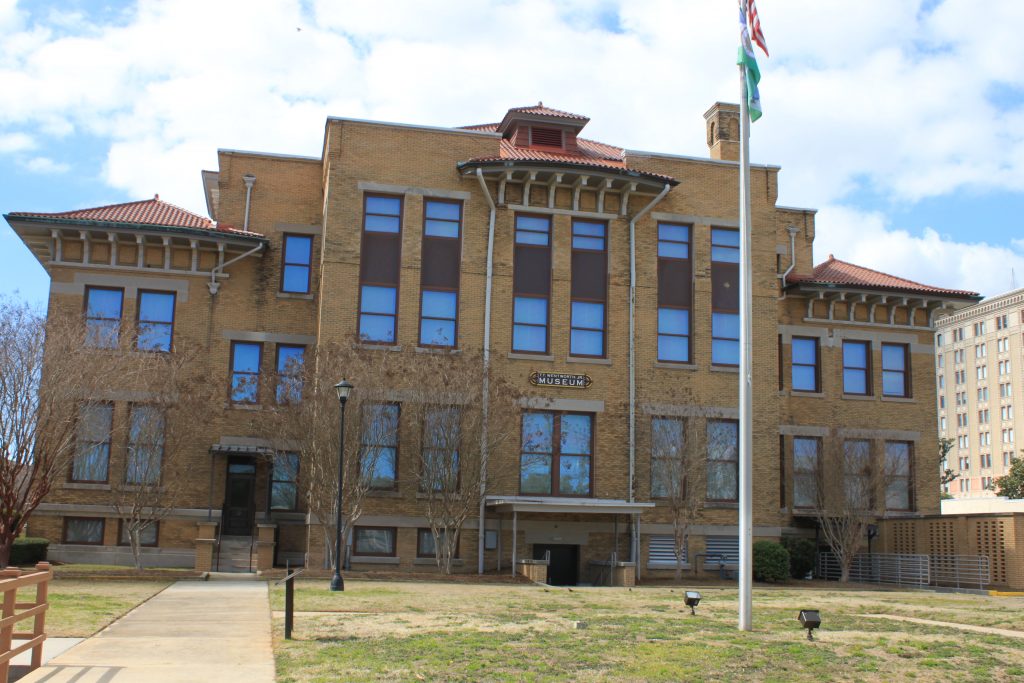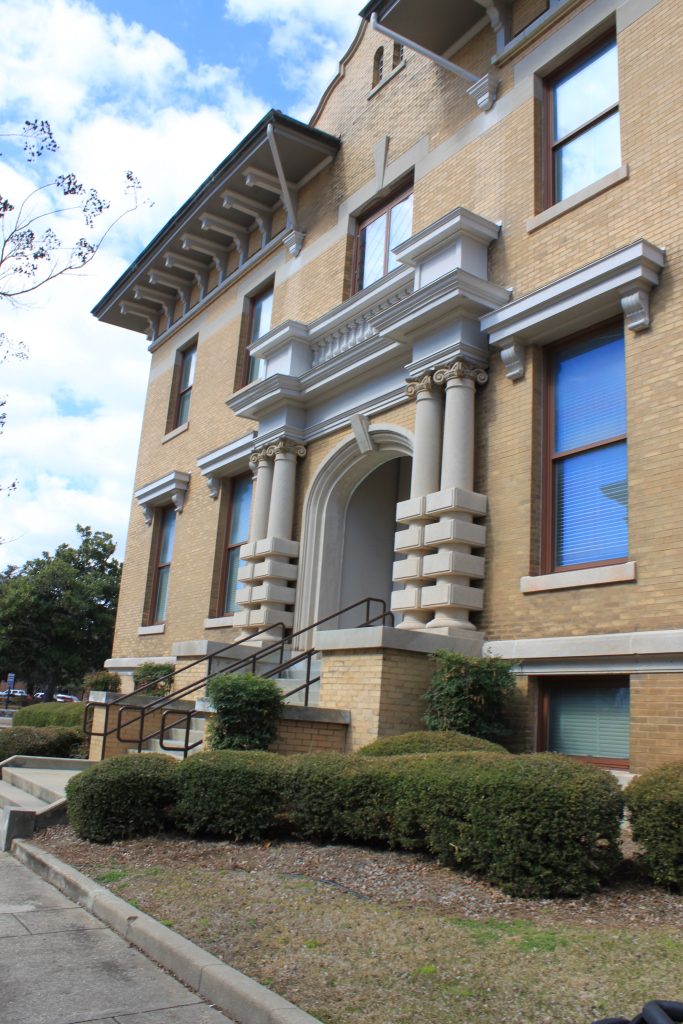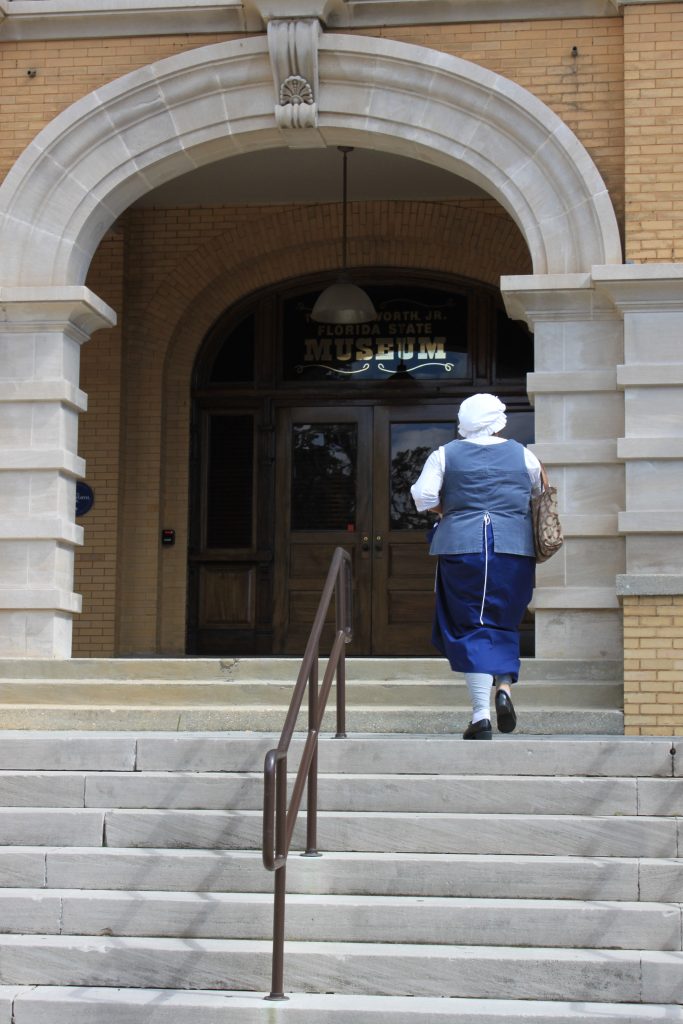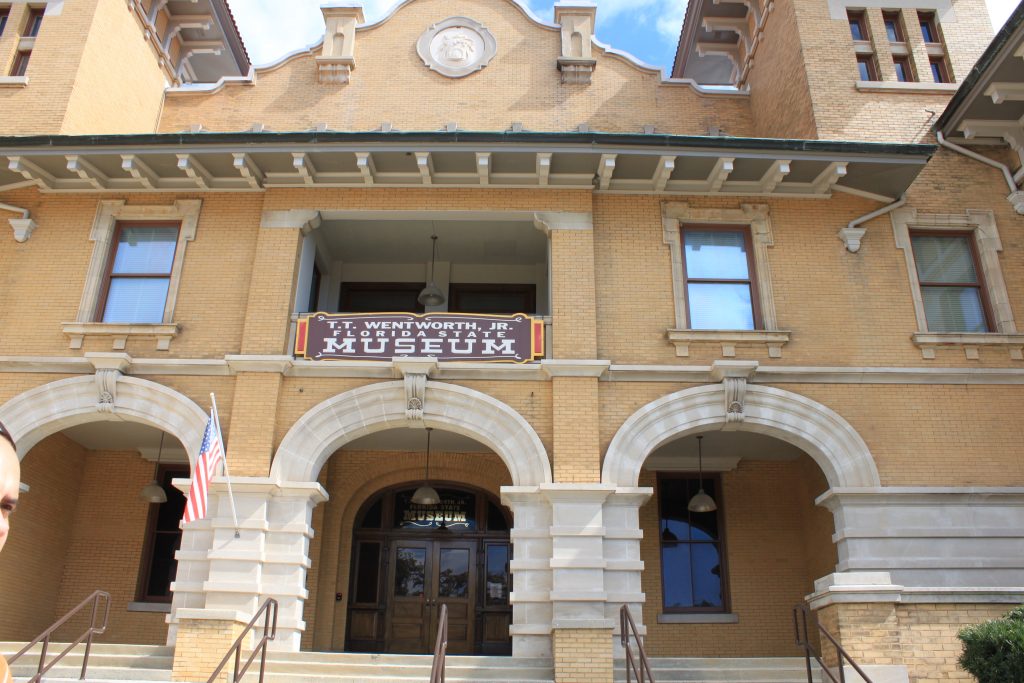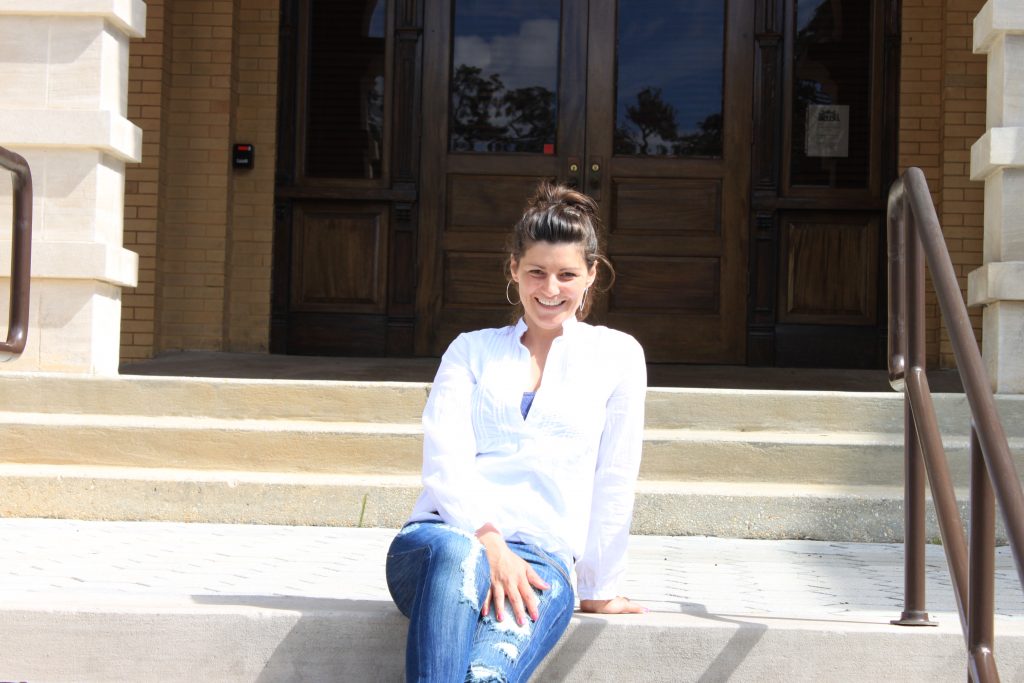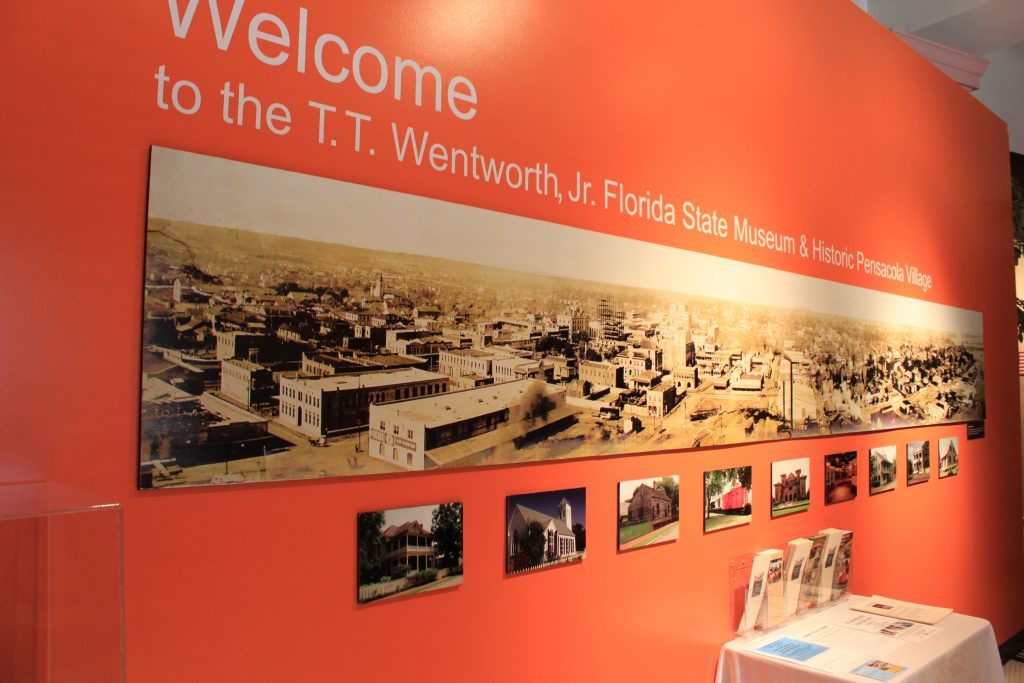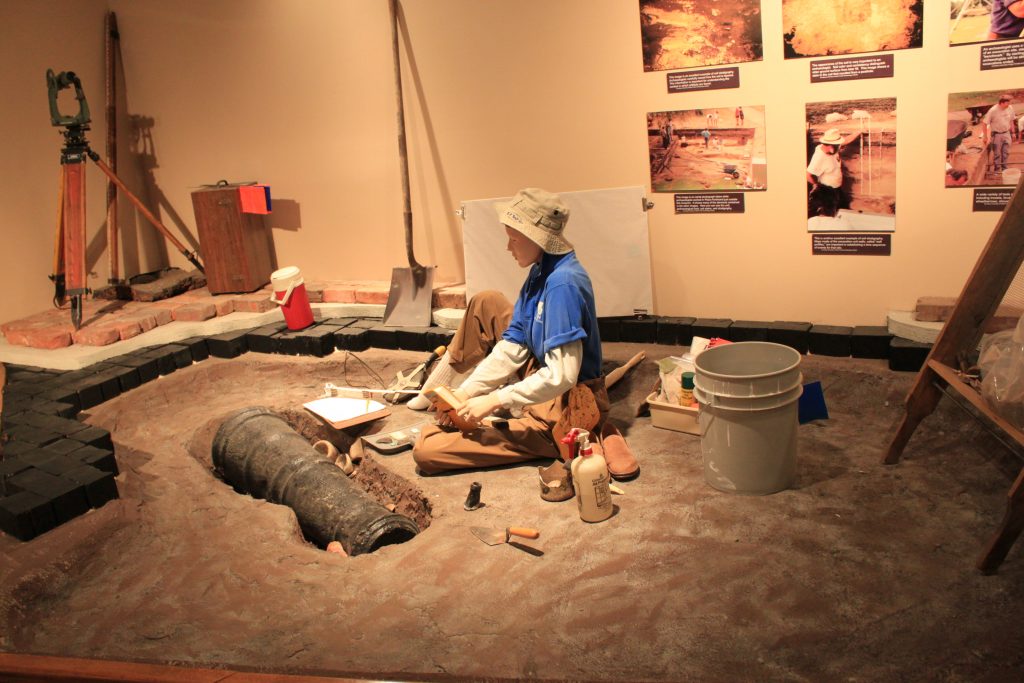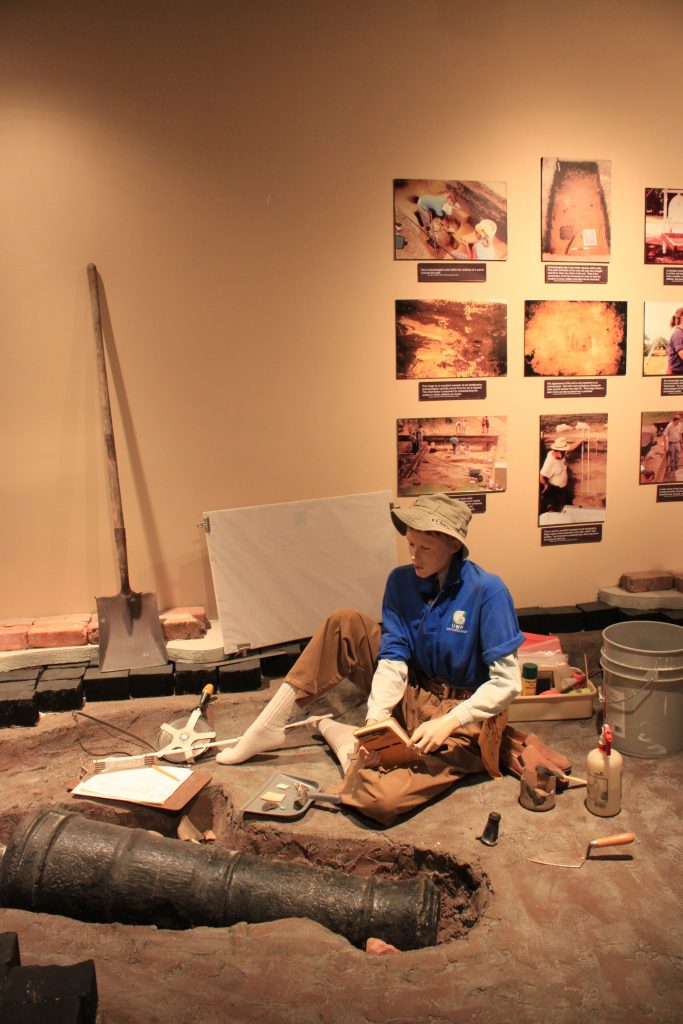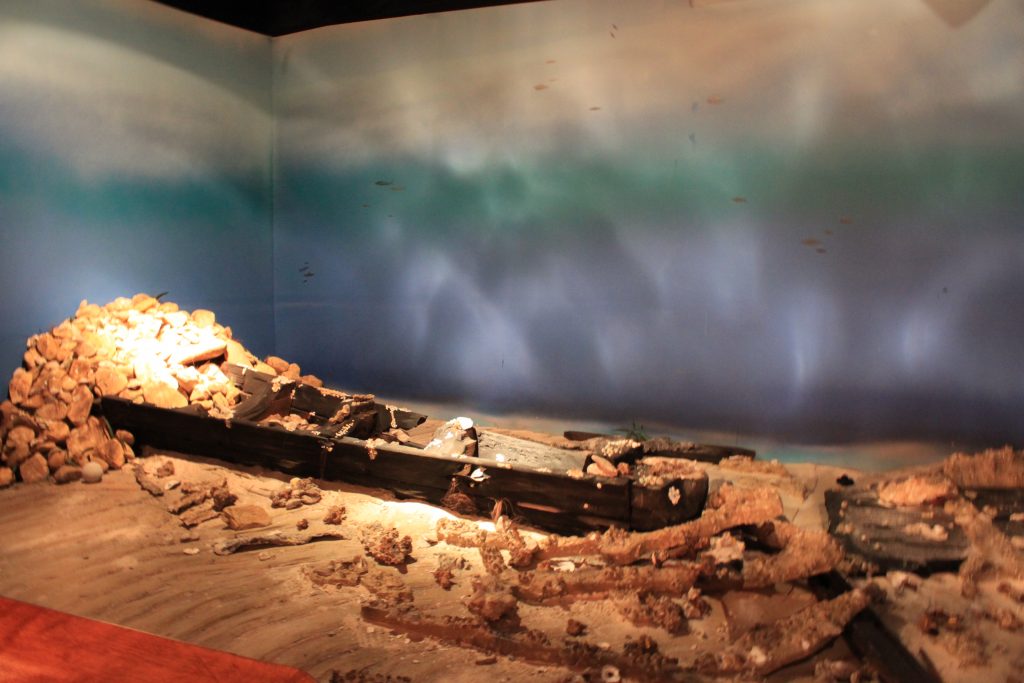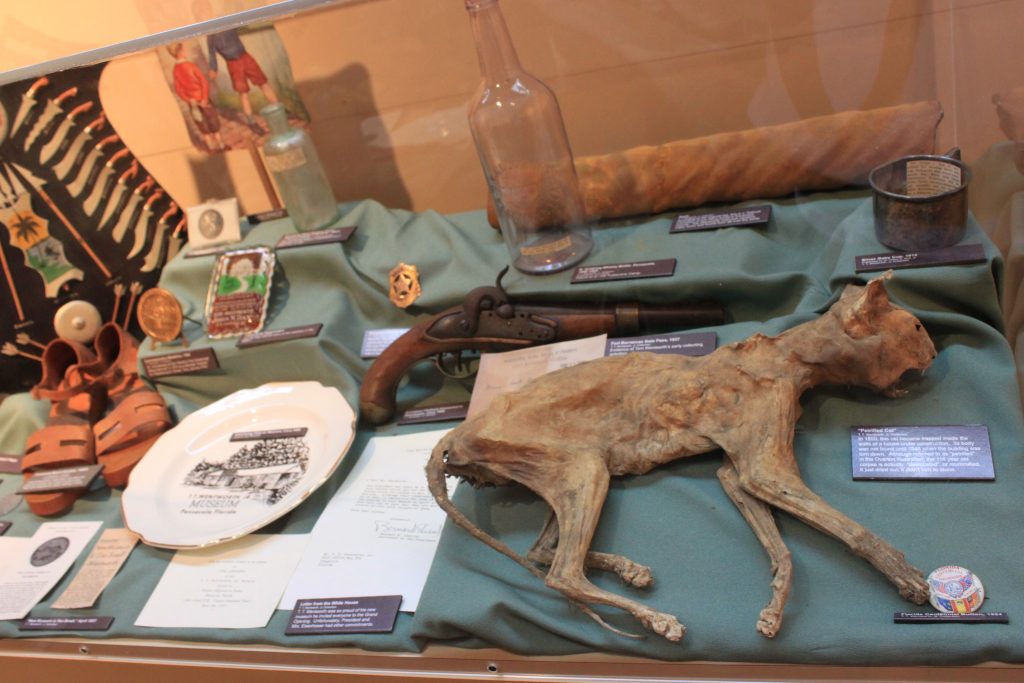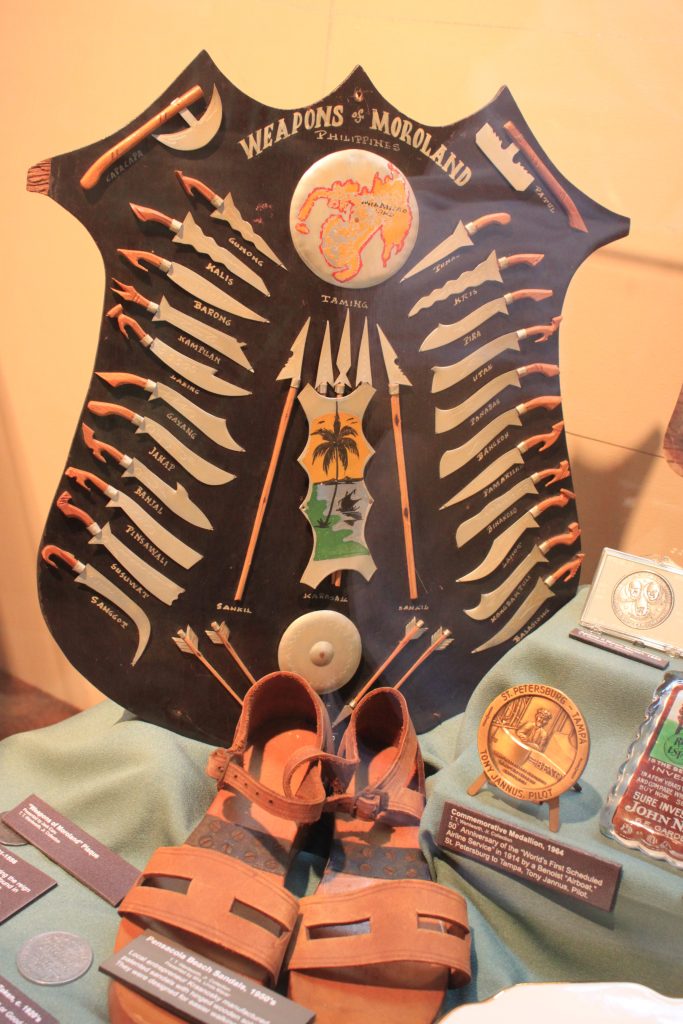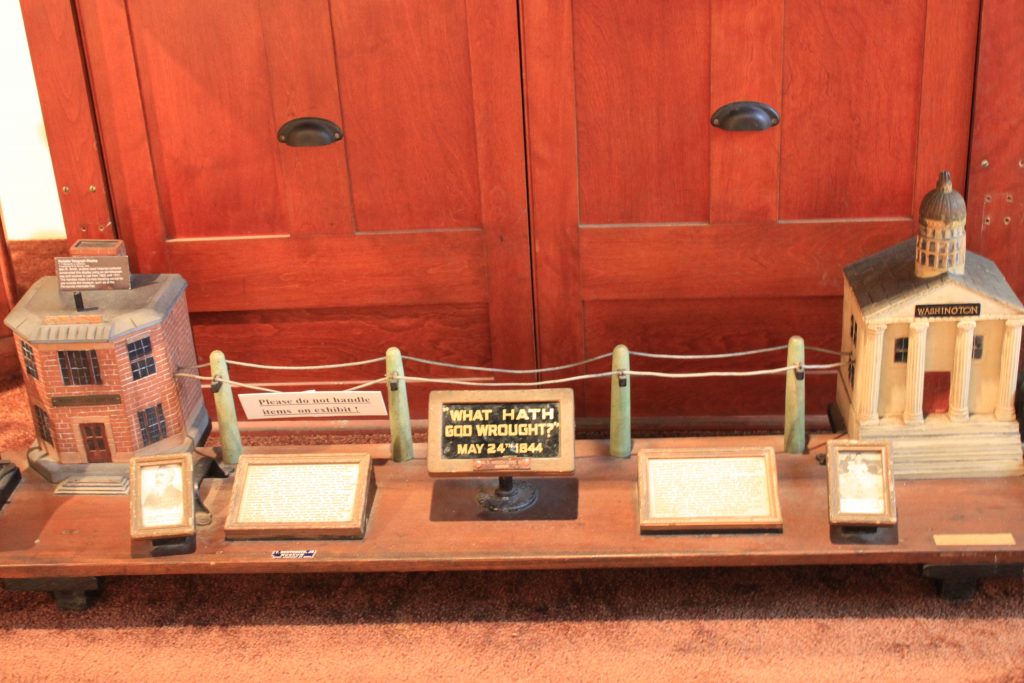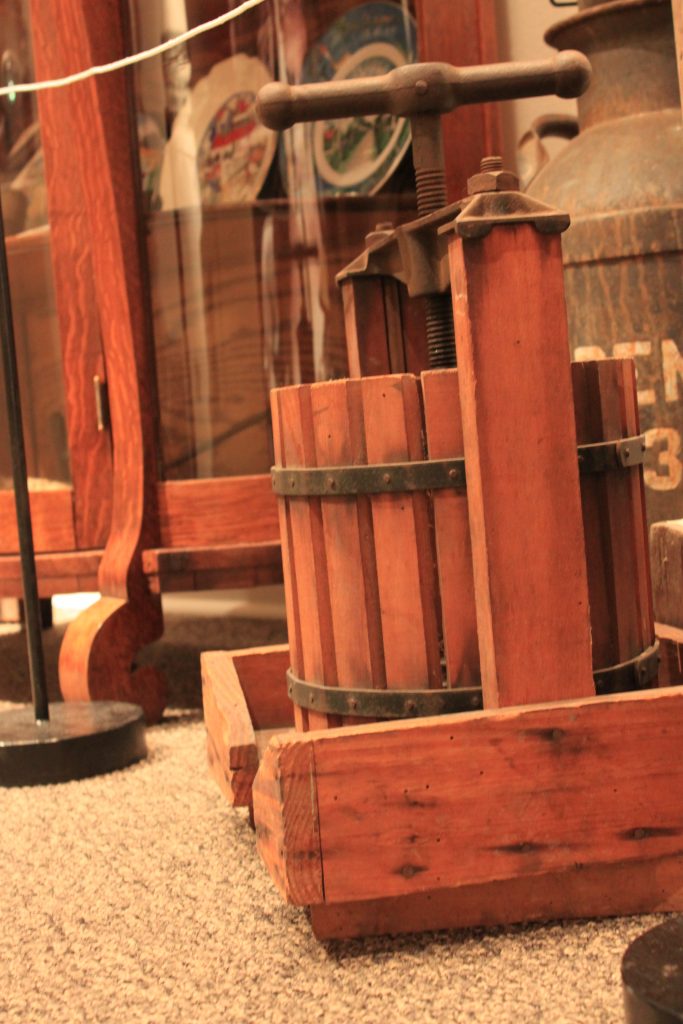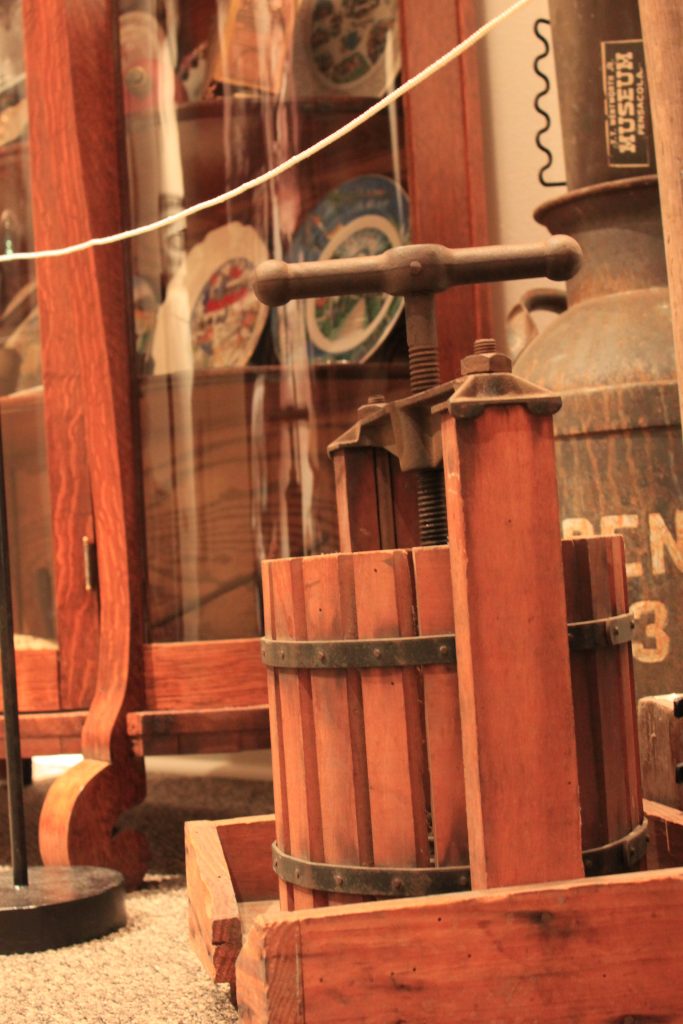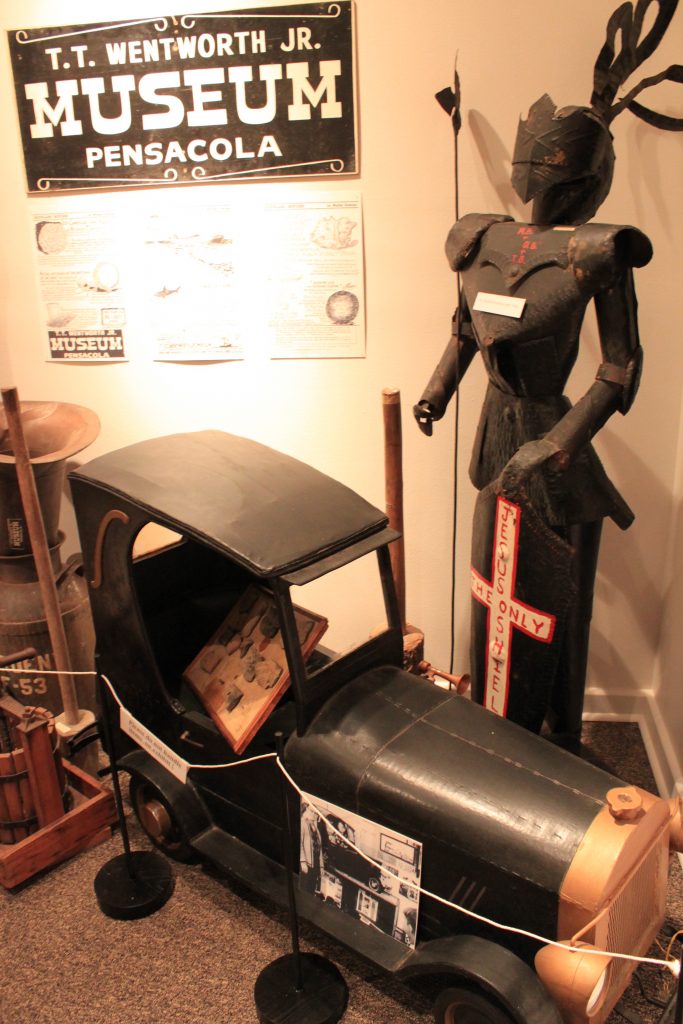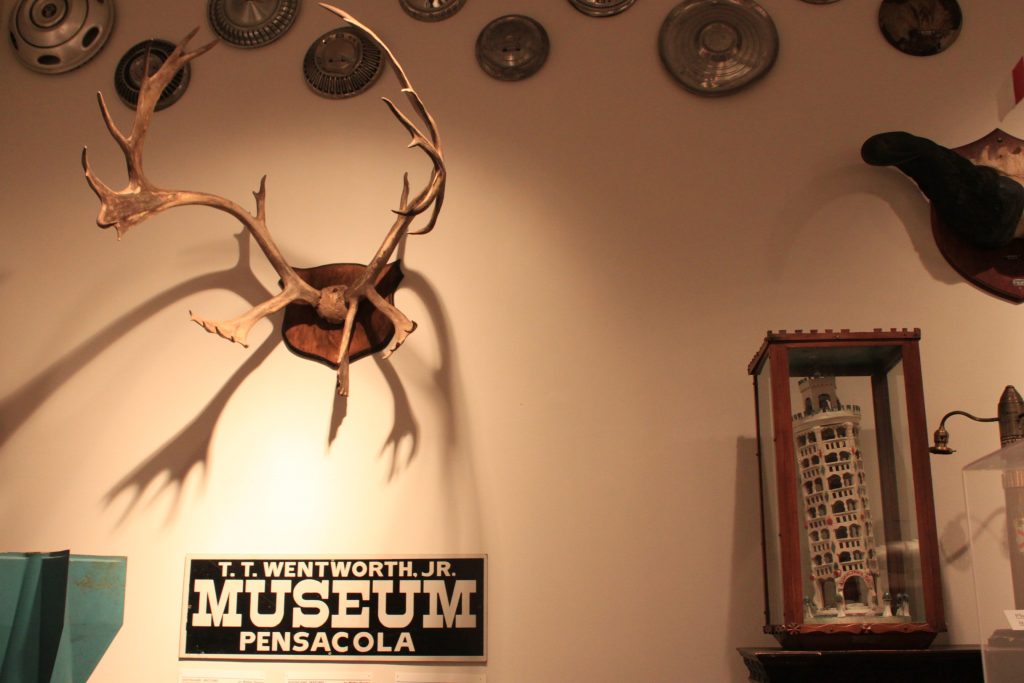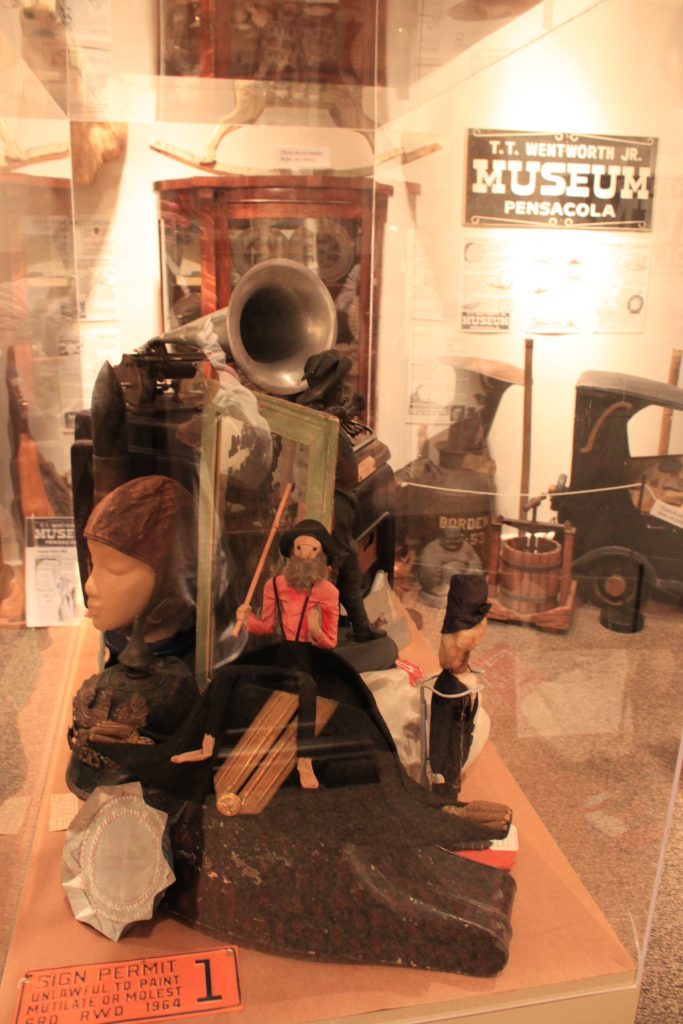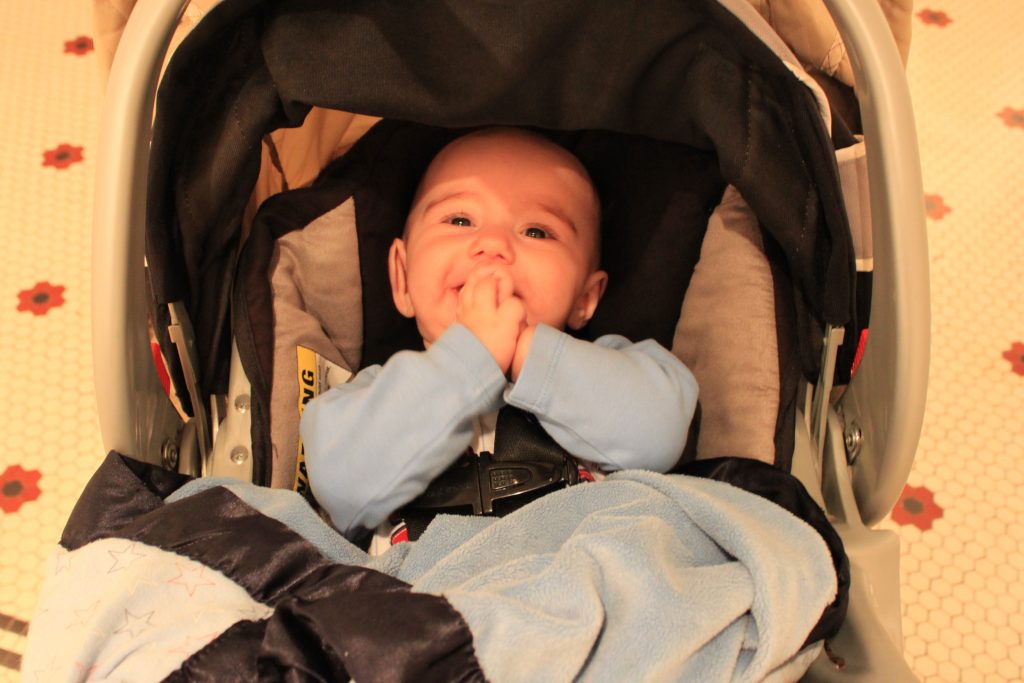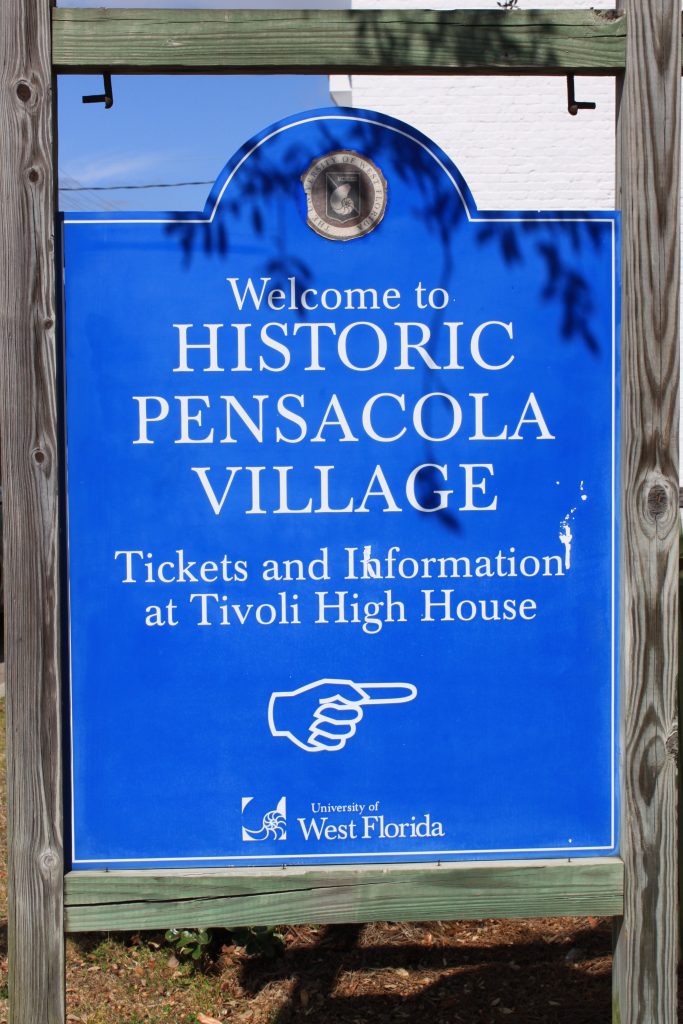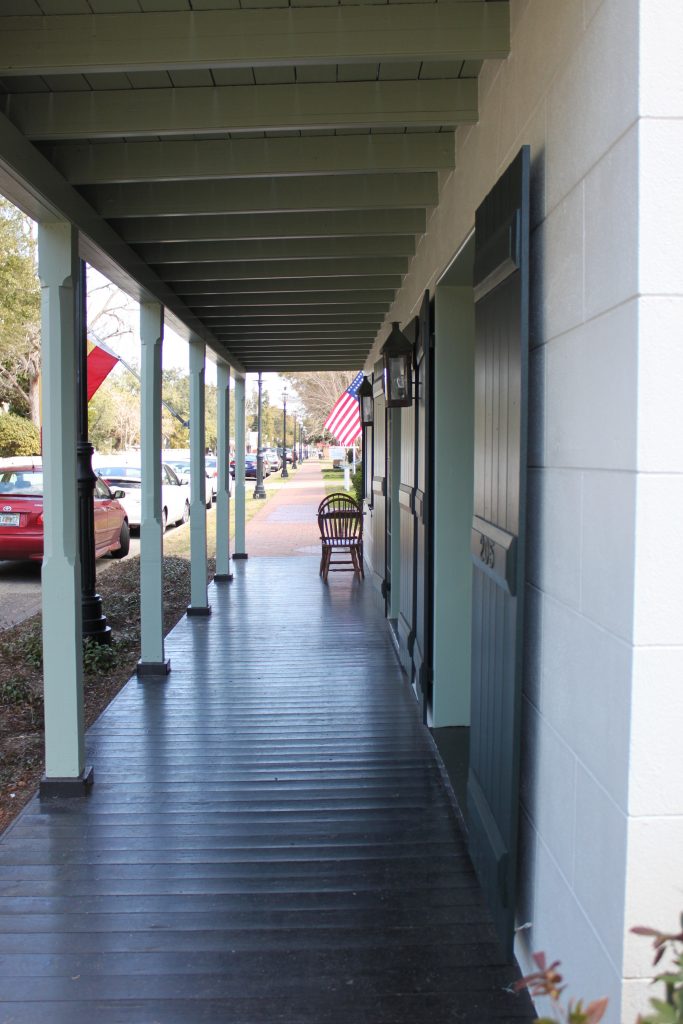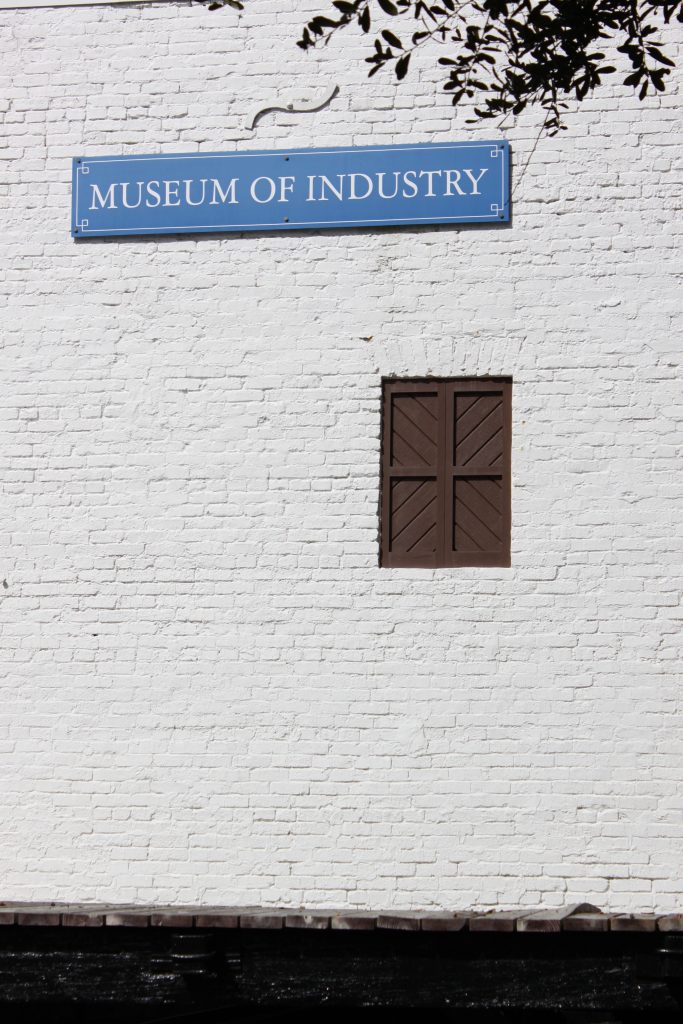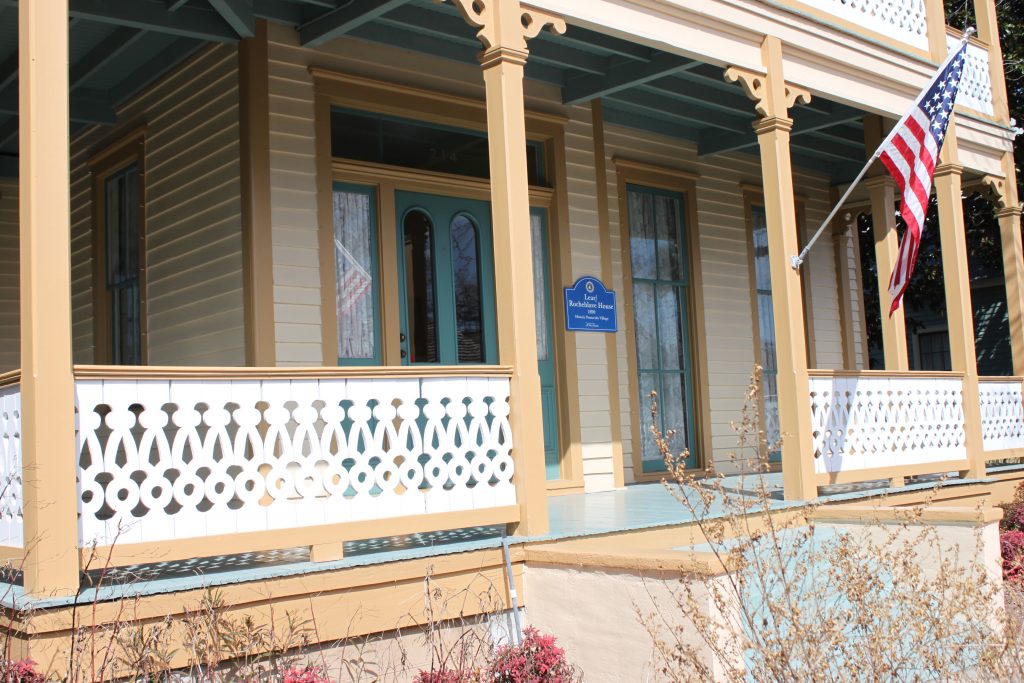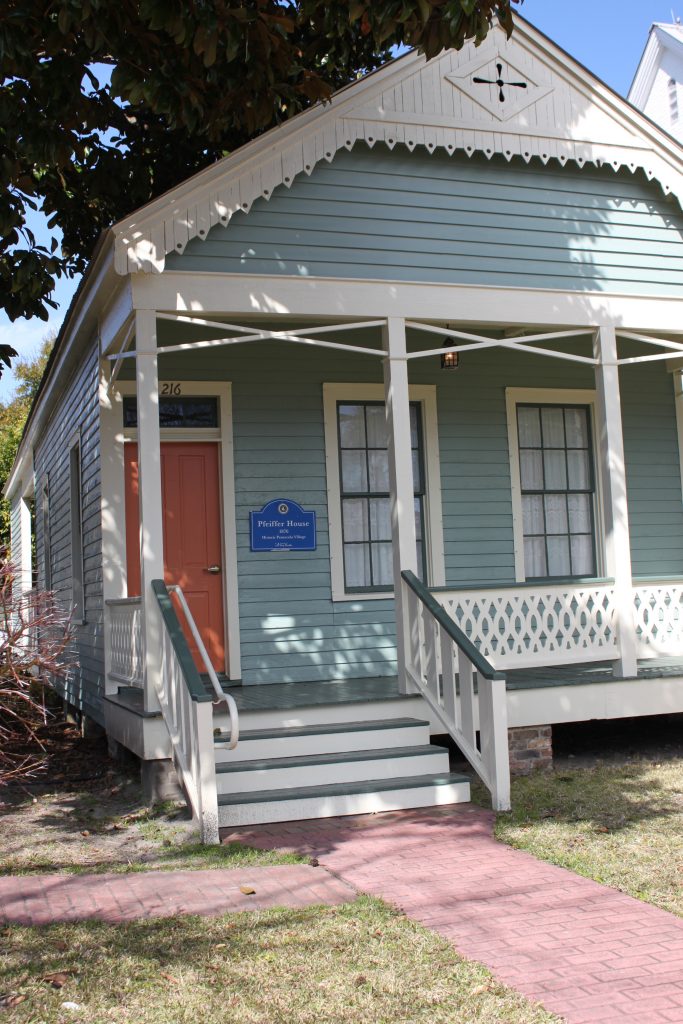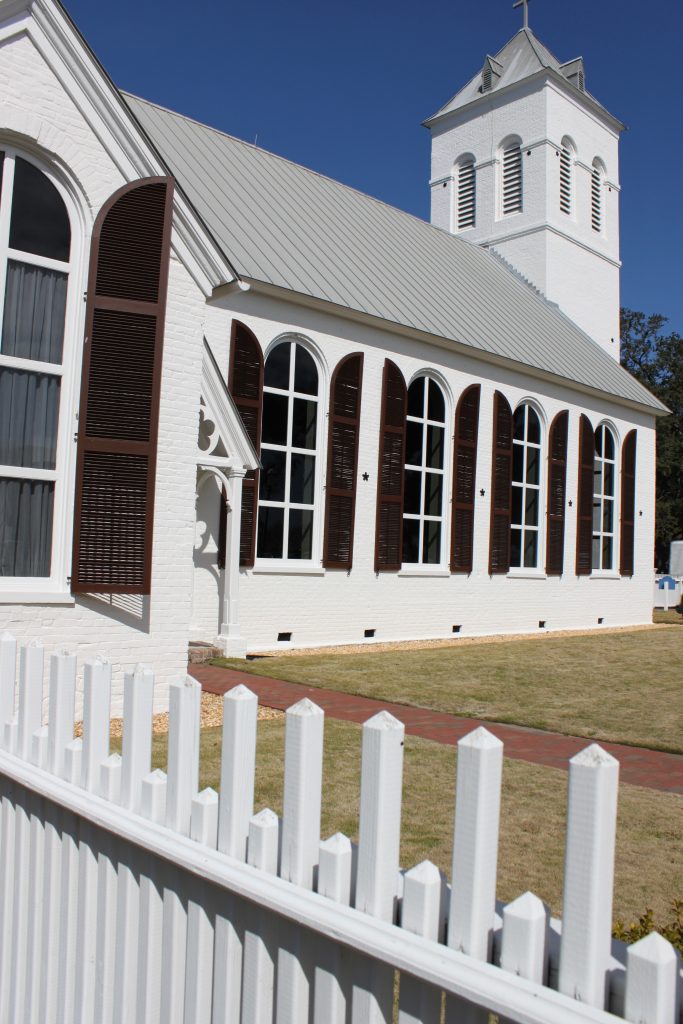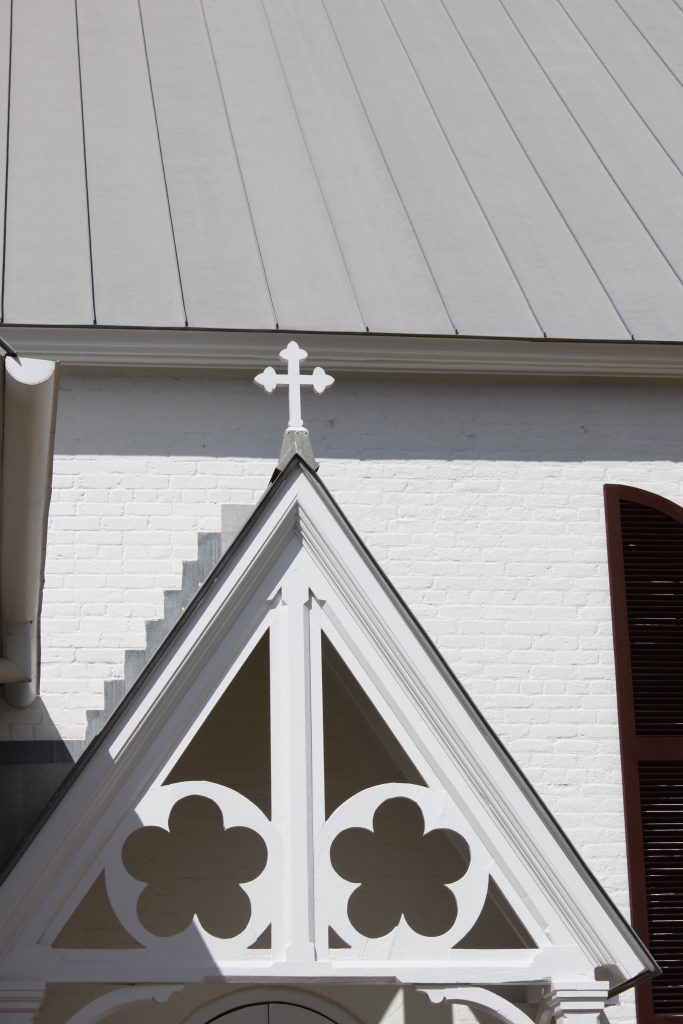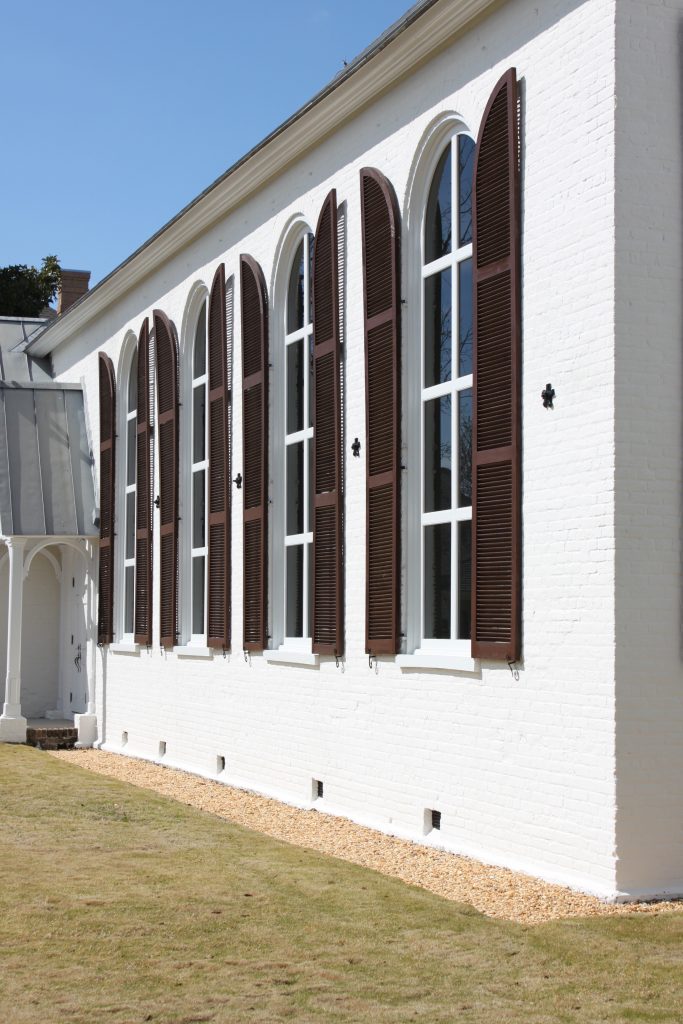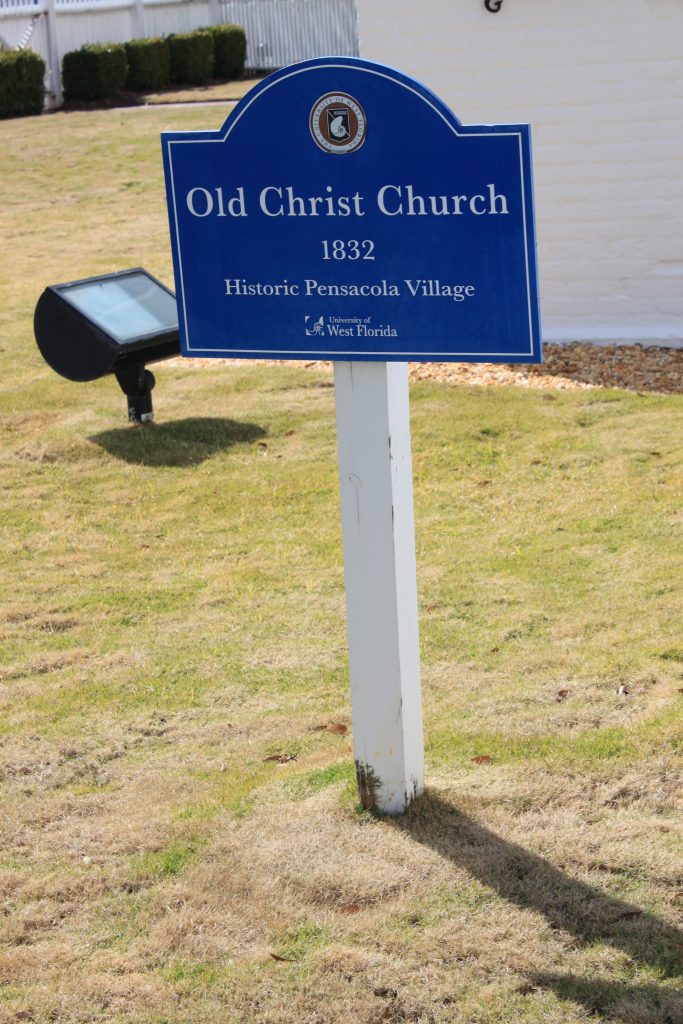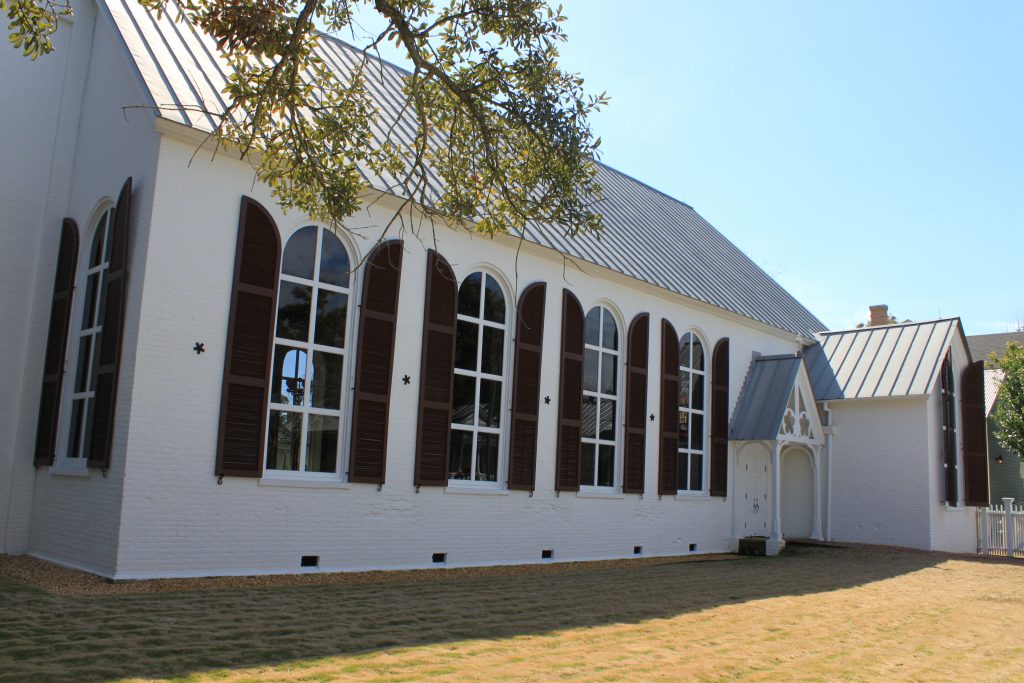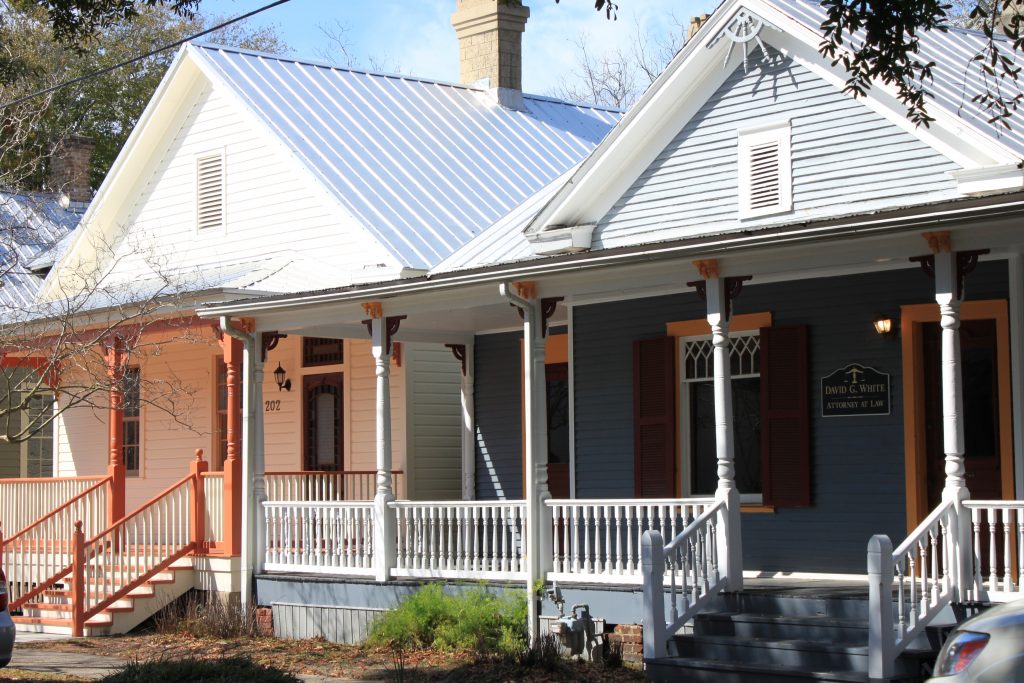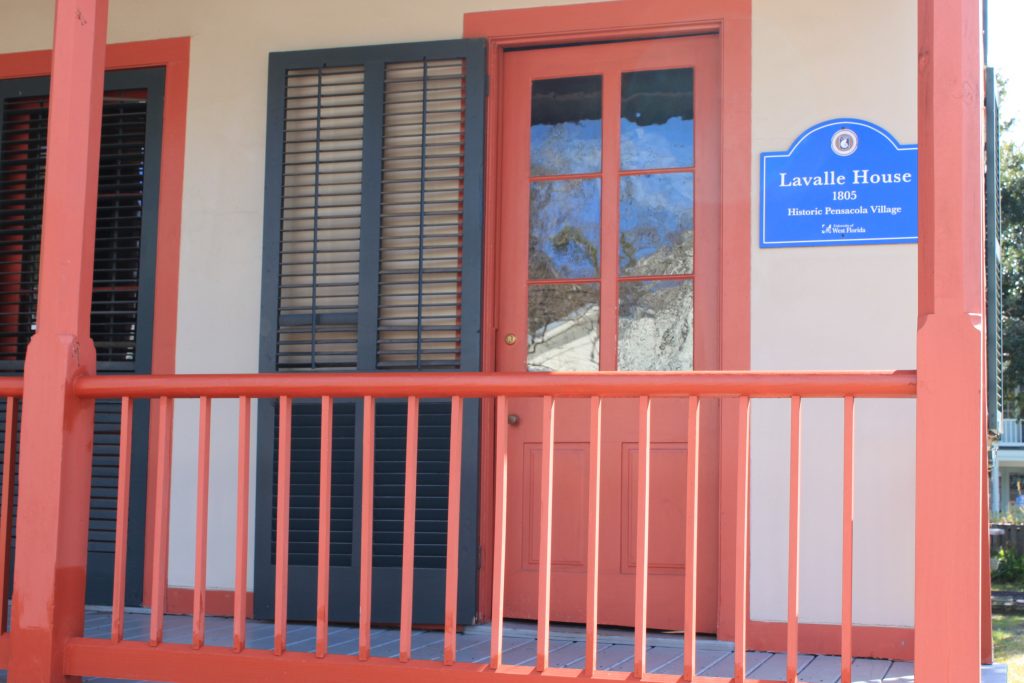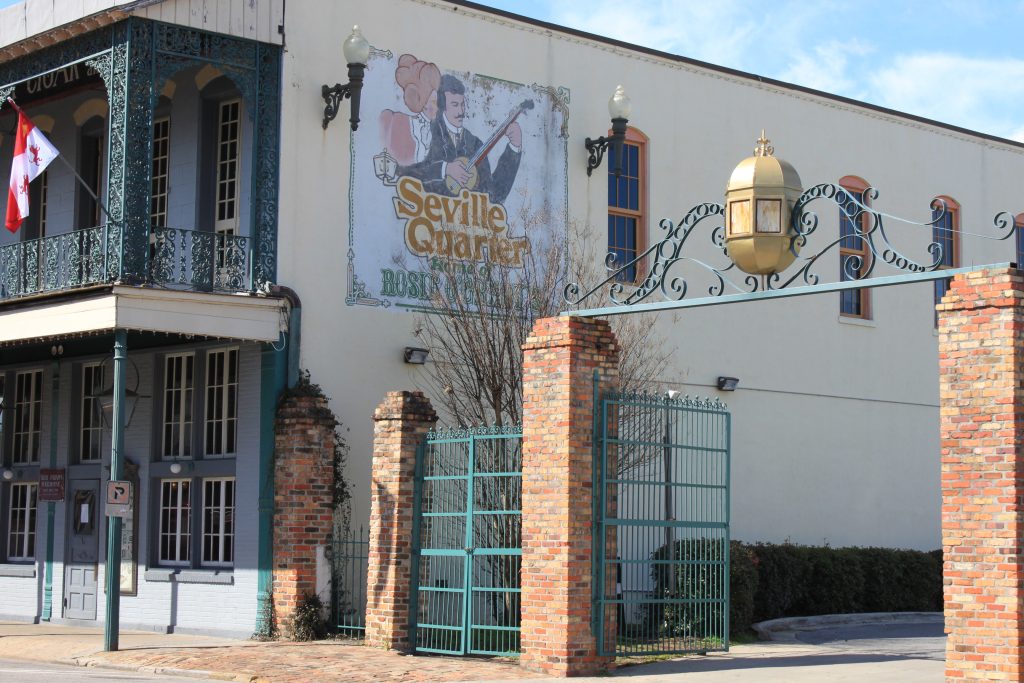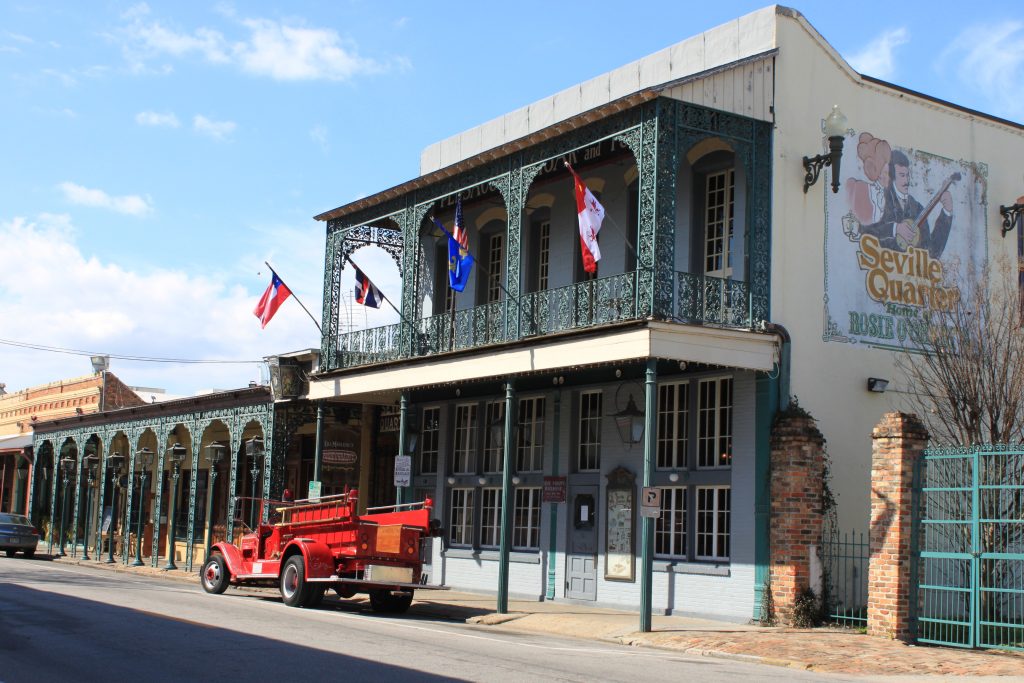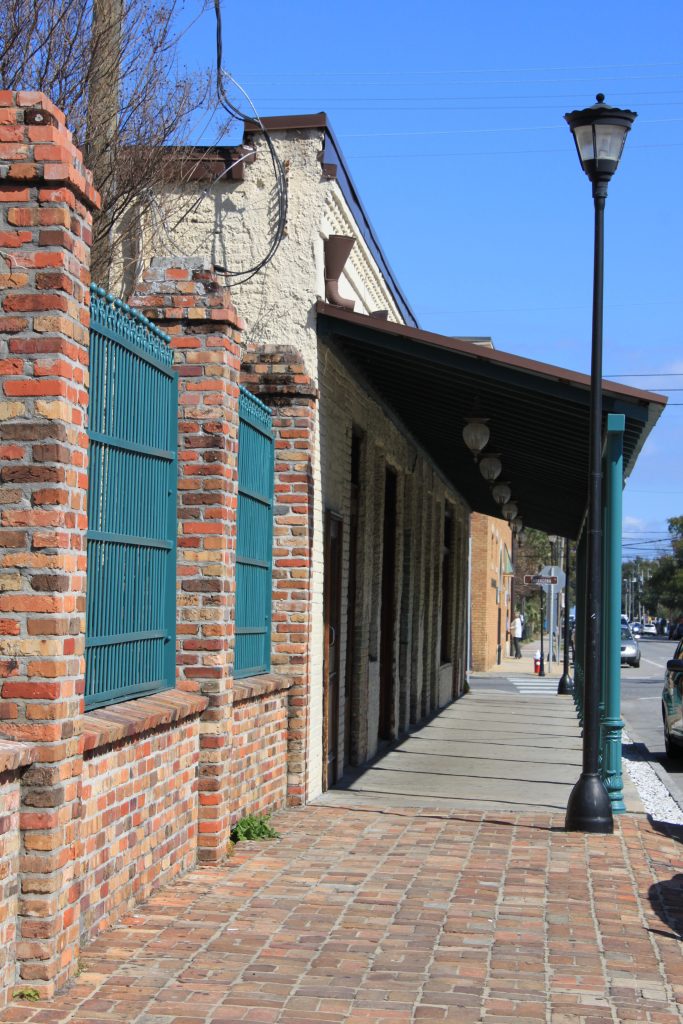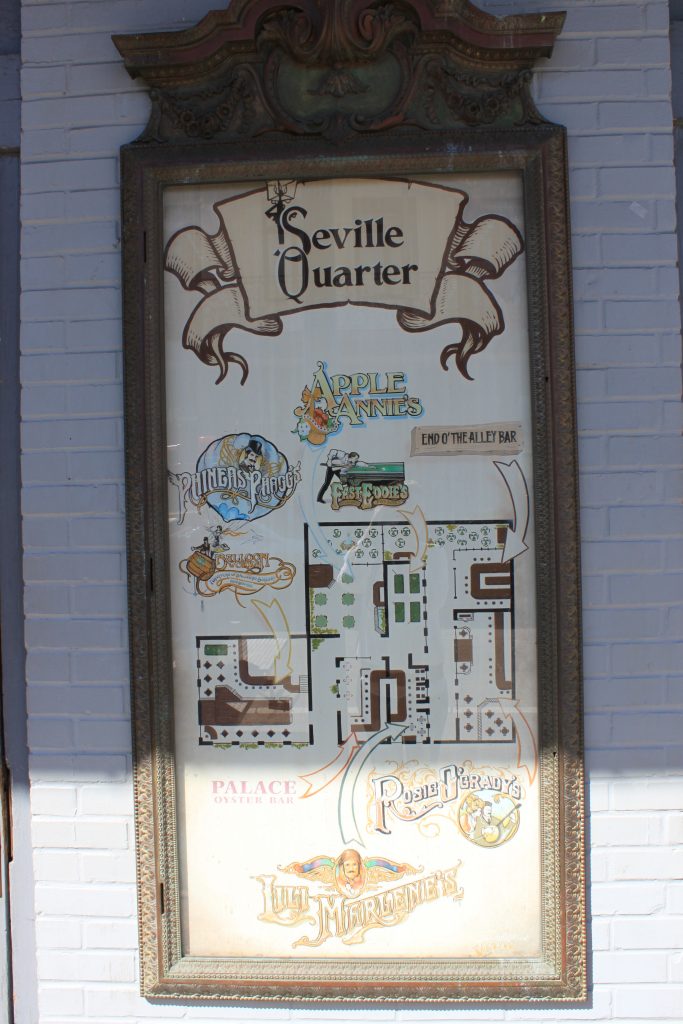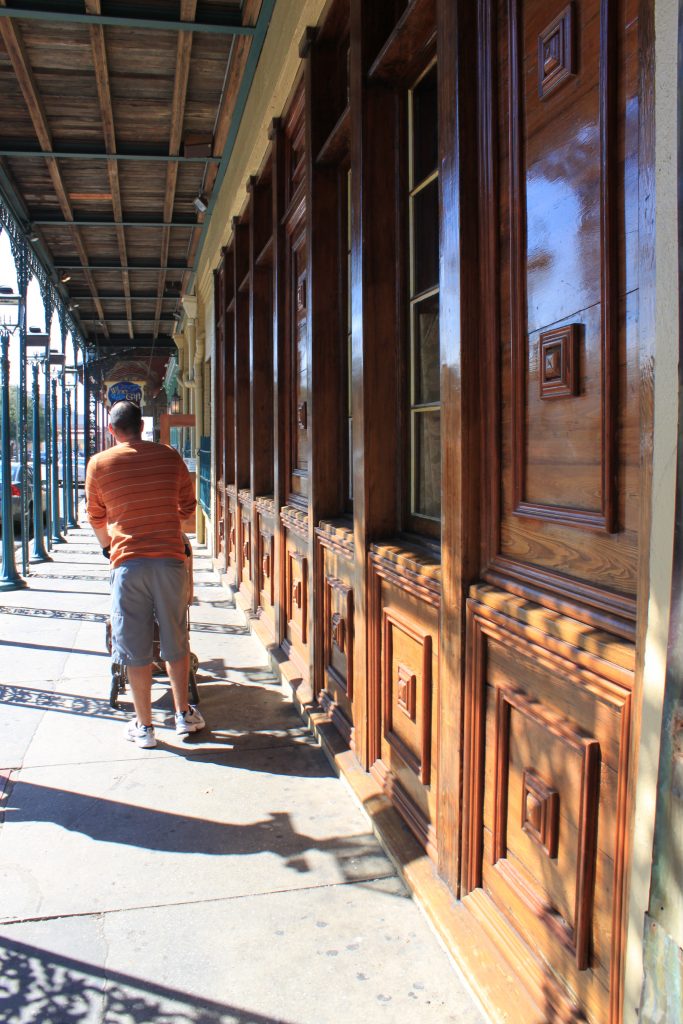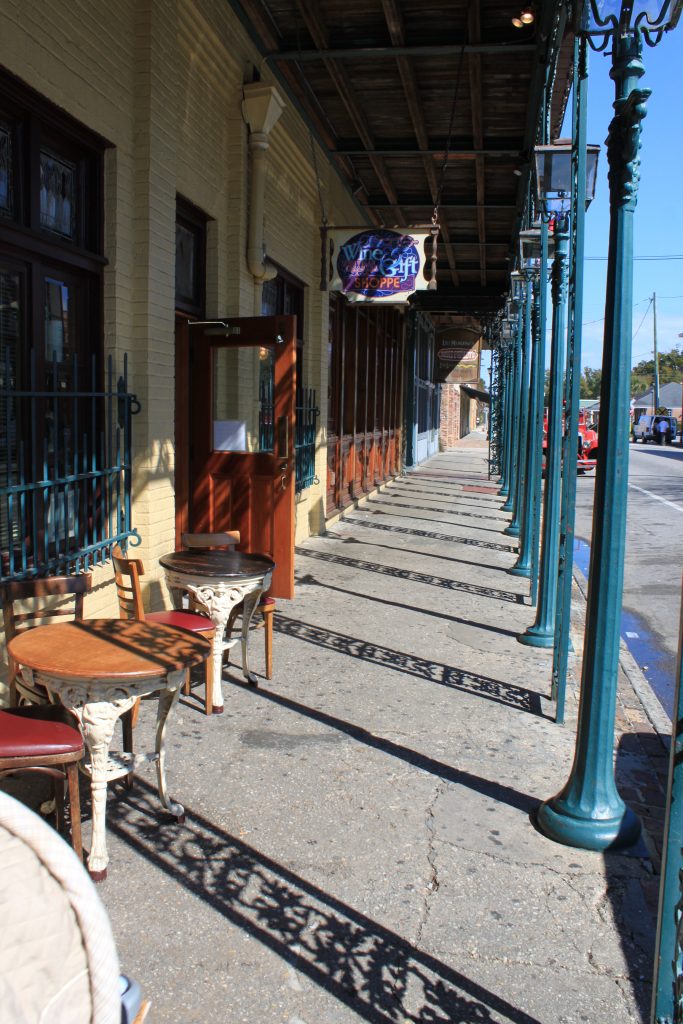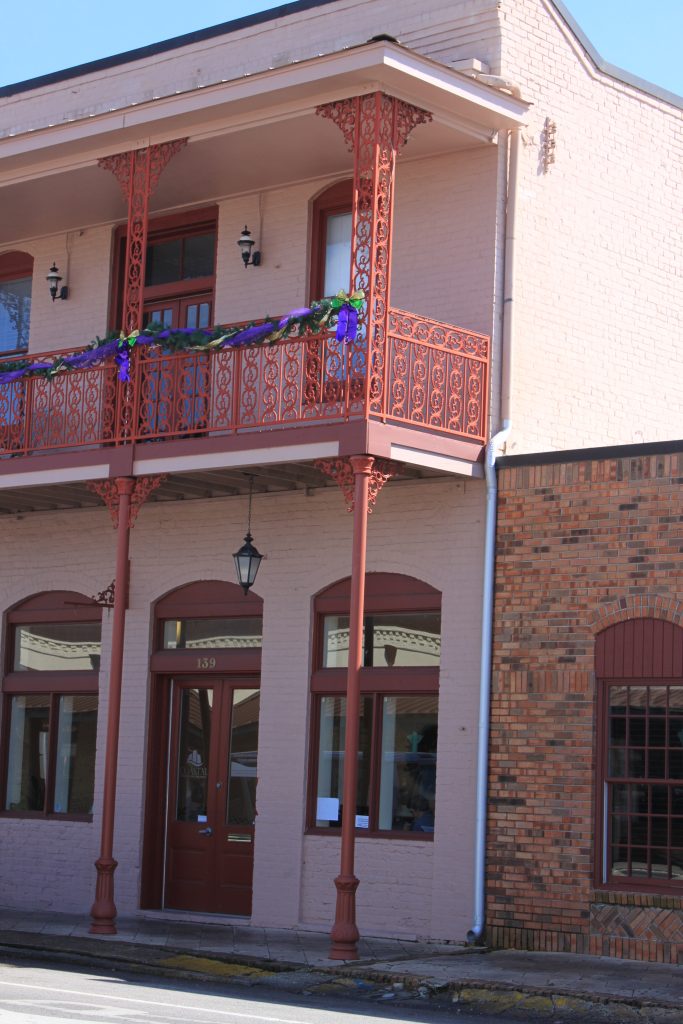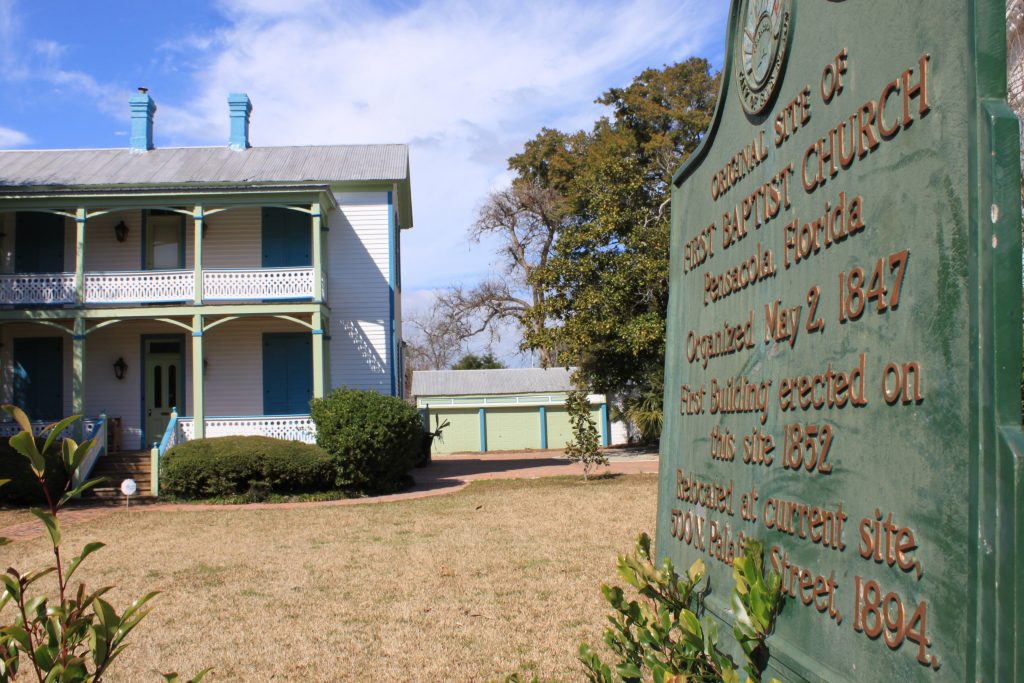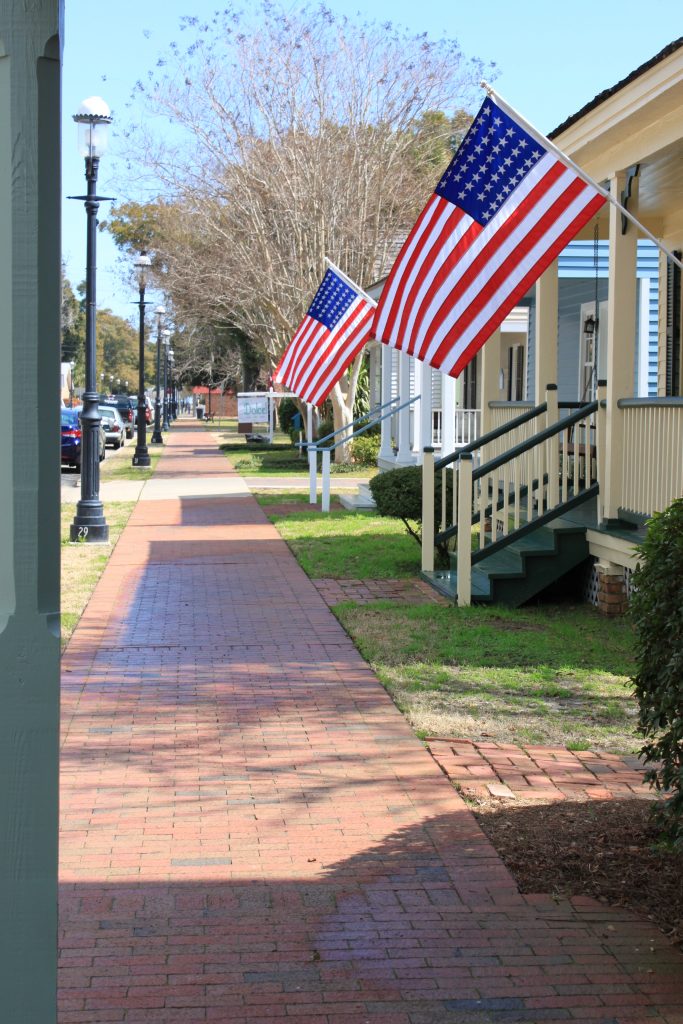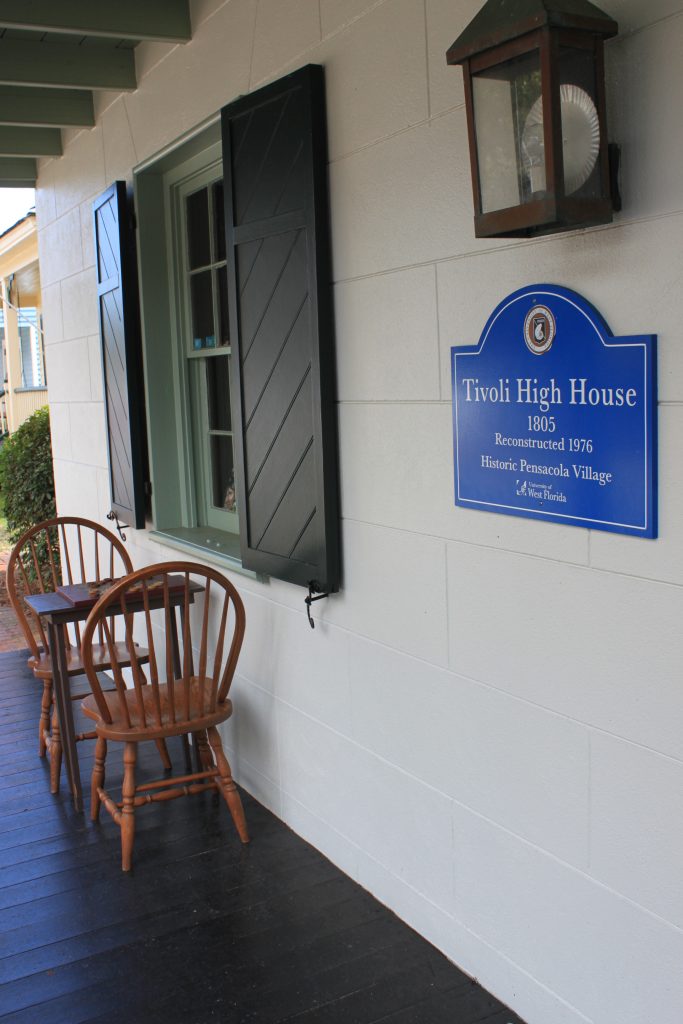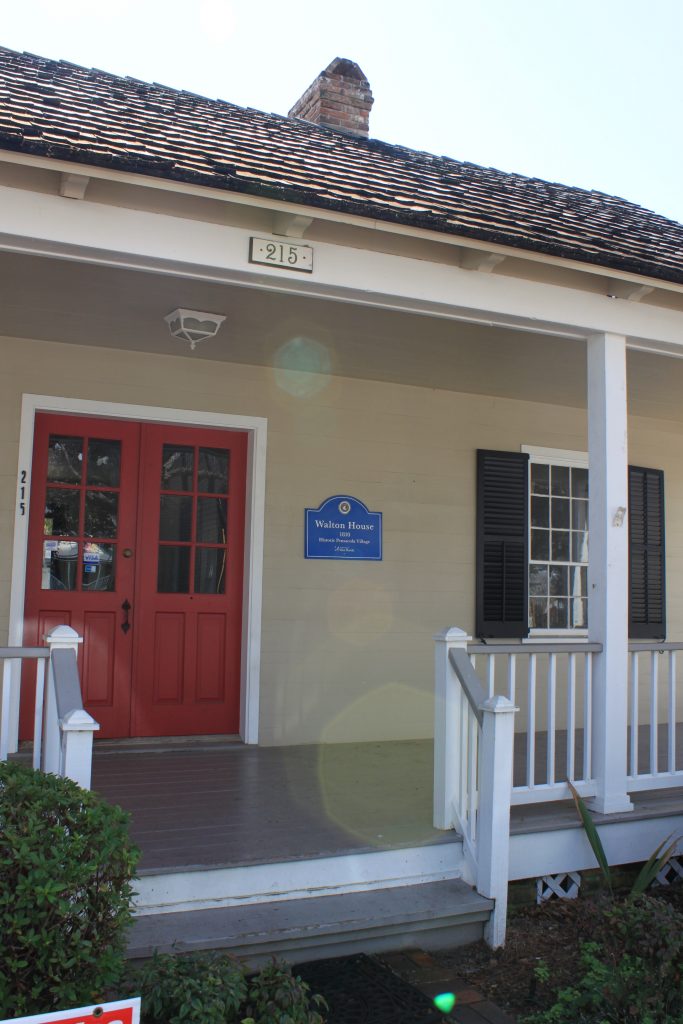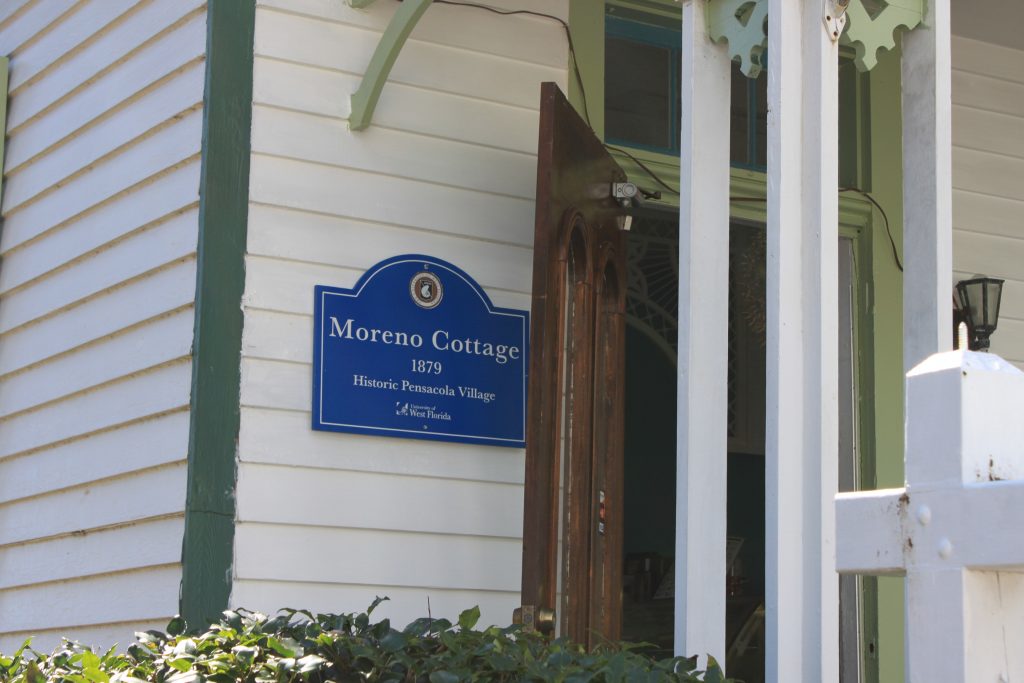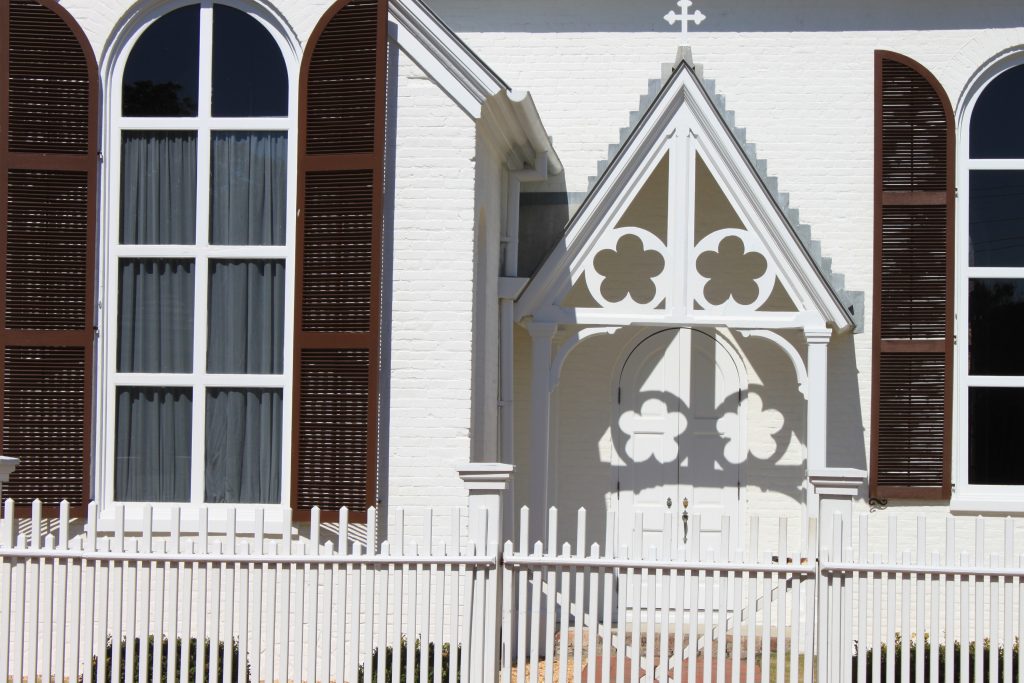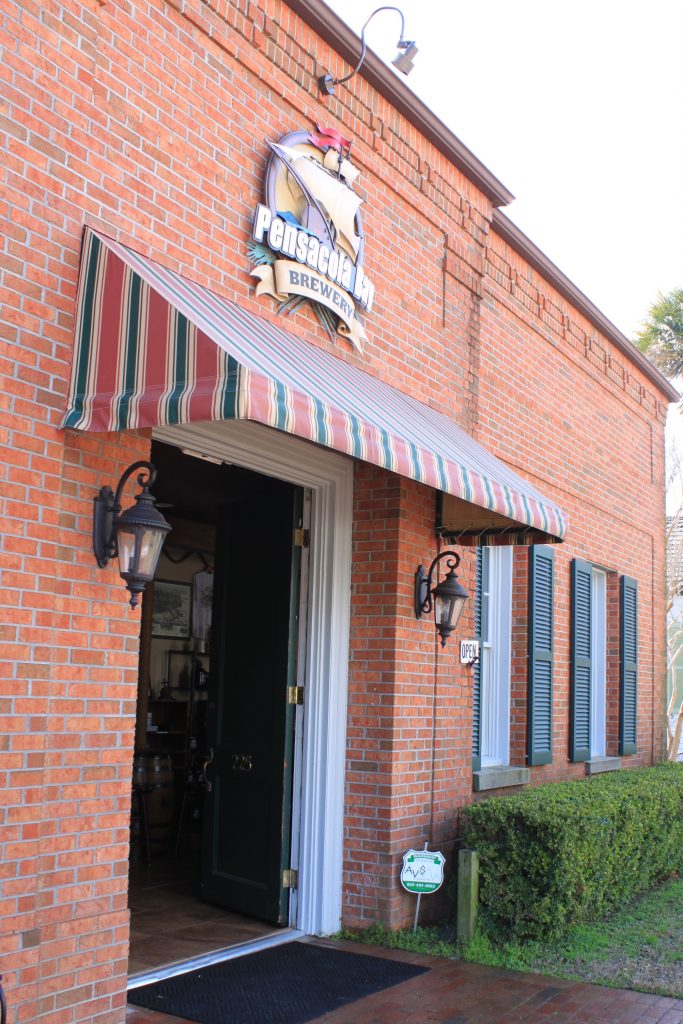We couldn’t think of a better way to explore the cultural, historical and architectural treasures of Pensacola Florida than by visiting the T.T. Wentworth Jr. Florida State Museum. The museum was built in 1908 and housed in the former three story Mediterranean Revival City Hall. After the museum we took a walking tour through the charming streets of the Historic Village around the decades old houses which are still preserved to this day.
There are several permanent exhibitions at the museum as well as seasonal ones, but all of them are extremely informative and neat. We spent hours wandering around the building and the many cool galleries showcasing the fascinating history of Pensacola we had no idea about. You can read more about The T.T Wentworth Jr. Museum here.
The museum is a wonderful place to bring the kids too and together learn some of the history of how Wentworth came about to opening his first roadside stand where he would display his collection of different items he found and that later donated all of them to the city. A floor is dedicated to said so eccentric collection that includes a mummified cat, among other items. The other two floors illustrate and interpret life in the Florida Panhandle over the centuries. The other floors house a science interactive museum for children.
T.T. Wentworth, Jr. Museum is open daily from 10am to 4pm and from 12pm to 4pm on Sunday and can be found here:
After the tour of the museum we set off on exploring the old Historic Pensacola Village which is located nearby. We decided on a self guided tour, but if you are interested in a guided tour there are few available for purchase. Admission is purchased for a week, and includes access to the entire complex and guided tour of several historic buildings. These buildings can be entered by visitors only during the tour. Or you can enjoy a self guided audio tour you can purchase via an app on your phone. There are many other tours available: a ghost tour around the village, crazy dash walking adventure, puzzling adventure and so on, there is something for everyone.
The Village consists of 29 historic houses and museums and is open for visitors Tuesday through Saturday, from 10:00 a.m. to 4:00 p.m. Thursday-Saturday and from noon until 4:00 p.m. for Half Price Evenings and Sundays. Members receive free admission for one year.
Built in 1884 for the Pensacola Ice Company, the “Hispanic Building” was a long narrow brick structure with six arches facing Zaragoza Street. Earlier structures at this site served as British and Spanish barracks, a boarding house and, in the 1830s the home of the West Florida Academy. The present building has housed the New Orleans Grocery Company, the Levy-Hallmark Company and the Pensacola-Lurton Company, which leased it to the county for a surplus warehouse. It was acquired by the city in 1968 and is now an integral part of the Historic Pensacola Village.
The Old Christ Church, also known as Christ Church, built in 1832 in Pensacola, Florida is a historic Episcopal church building. On May 3, 1974, it was added to the U.S. National Register of Historic Places. In 1989, the building was listed in A Guide to Florida’s Historic Architecture, published by the University of Florida Press.
Built in 1805 the Charles Lavalle House features a French Creole period style. Tours focus on Pensacola’s history as a Spanish colony.
Seville Square in Pensacola, Florida is the center of the old settlement of Pensacola by the Spanish after several unsuccessful attempts beginning in 1559. This was the earliest known attempt at settlement on the North American continent. Seville Square and its twin, Plaza Ferdinand VII, were the parade grounds for the Fort of Pensacola established during British rule. In the 1960s a young group of local preservationists decided to work to restore the older parts of Pensacola. They formed the Pensacola Heritage Foundation, joined the National Trust, created the Seville Square Historic District, registered the district on the National Register of Historic Places, bought and restored with their own labor the historic Clara Barkley Dorr House on the square and convinced the city to restore Seville Square.The Seville Historic District is a place where settlers built homes along the bay. The settlers were Spanish, French and British. Pensacola was a seaport town – fishing, shipping, and naval stores were the backbone of community. The homes in the district date from the early and late 19th Century. These homes are some of the oldest in Florida. Established in 1752 by a group of Spanish hurricane survivors from Santa Rosa Island. The British took West Florida after the French and Indian War of 1763. British surveyors mapped the existing streets. In 1781 the Spanish captured Pensacola and changed the street names to Spanish. These names remain the same today. Seville Square is full of live oak trees. These trees give shade to visitors for picnics in the park. The trees are identified by their broad spreading crown, evergreen leaves and long acorns.
The tour around the houses took us about an hour. The village is a mix of Spanish, French, Great Britain and American influence and it’s easy to see from where it takes it’s nickname “The City of Five Flags”.
We really enjoyed the Seville Square which reminded us of the French Quarter in New Orleans which actually brought us to our next stop: the Pensacola Bay Brewery where we enjoyed the rest of the afternoon.
As Always Don’t Lose Your Travel Bug!

